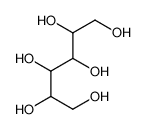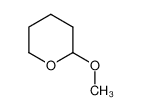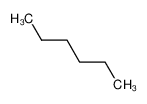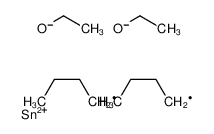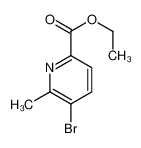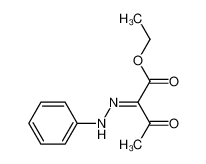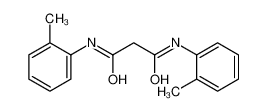| Product name | ethanol |
|---|
| Product number | - |
|---|---|
| Other names | Ethanol |
| Identified uses | For industry use only. Solvent |
|---|---|
| Uses advised against | no data available |
| Company | MOLBASE (Shanghai) Biotechnology Co., Ltd. |
|---|---|
| Address | Floor 4 & 5, Building 12, No. 1001 North Qinzhou Road, Xuhui District, Shanghai, China |
| Telephone | +86(21)64956998 |
| Fax | +86(21)54365166 |
| Emergency phone number | +86-400-6021-666 |
|---|---|
| Service hours | Monday to Friday, 9am-5pm (Standard time zone: UTC/GMT +8 hours). |
Flammable liquids, Category 2
2.2 GHS label elements, including precautionary statements| Pictogram(s) | 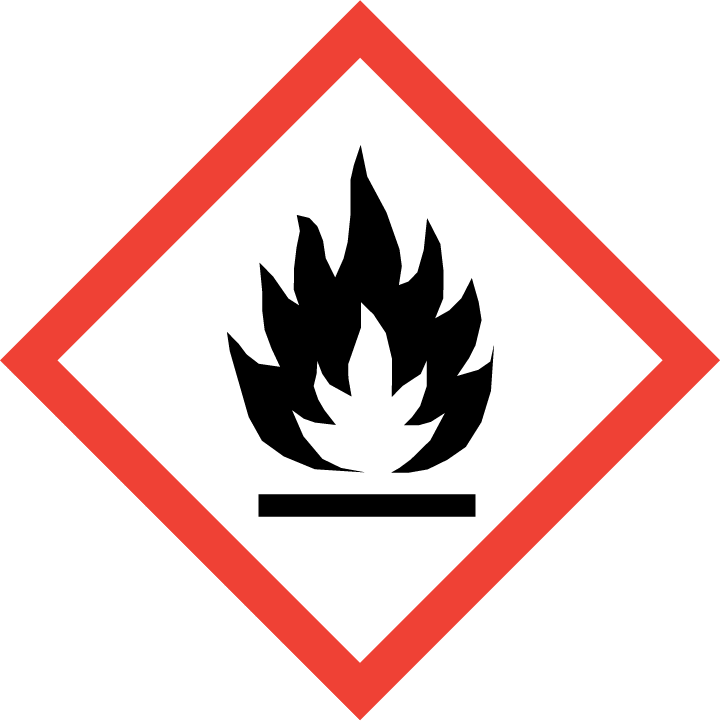 |
|---|---|
| Signal word | Danger |
| Hazard statement(s) | H225 Highly flammable liquid and vapour |
| Precautionary statement(s) | |
| Prevention | P210 Keep away from heat, hot surfaces, sparks, open flames and other ignition sources. No smoking. P233 Keep container tightly closed. P240 Ground and bond container and receiving equipment. P241 Use explosion-proof [electrical/ventilating/lighting/...] equipment. P242 Use non-sparking tools. P243 Take action to prevent static discharges. P280 Wear protective gloves/protective clothing/eye protection/face protection. |
| Response | P303+P361+P353 IF ON SKIN (or hair): Take off immediately all contaminated clothing. Rinse skin with water [or shower]. P370+P378 In case of fire: Use ... to extinguish. |
| Storage | P403+P235 Store in a well-ventilated place. Keep cool. |
| Disposal | P501 Dispose of contents/container to ... |
none
3.Composition/information on ingredients 3.1 Substances| Chemical name | Common names and synonyms | CAS number | EC number | Concentration |
|---|---|---|---|---|
| ethanol | ethanol | 64-17-5 | none | 100% |
Consult a physician. Show this safety data sheet to the doctor in attendance.
If inhaledFresh air, rest.
In case of skin contactRemove contaminated clothes. Rinse and then wash skin with water and soap.
In case of eye contactFirst rinse with plenty of water for several minutes (remove contact lenses if easily possible), then refer for medical attention.
If swallowedRinse mouth. Refer for medical attention .
4.2 Most important symptoms/effects, acute and delayedExcerpt from ERG Guide 127 [Flammable Liquids (Water-Miscible)]: Inhalation or contact with material may irritate or burn skin and eyes. Fire may produce irritating, corrosive and/or toxic gases. Vapors may cause dizziness or suffocation. Runoff from fire control may cause pollution. (ERG, 2016)
VAPOR: Irritating to eyes, nose and throat. LIQUID: Not harmful. (USCG, 1999)
SYMPTOMS: Symptoms of exposure to this compound may include irritation. Ingestion may result in mucous membrane irritation. Eye contact may cause immediate pain and conjunctival hyperemia, but no serious injury. ACUTE/CHRONIC HAZARDS: This compound may cause local irritation. It may also cause mucous membrane irritation. When heated to decomposition it emits acrid smoke and fumes.
4.3 Indication of immediate medical attention and special treatment needed, if necessaryEmergency and supportive measures: 1. Acute intoxication. Treatment is mainly supportive. a. Protect the airway to prevent aspiration and intubate and assist ventilation if needed. b. Give glucose and thiamine, and treat coma and seizures if they occur. Glucagon is not effective for alcohol-induced hypoglycemia. c. Correct hypothermia with gradual rewarming. d. Most patients will recover within 4-6 hours. Observe children until their blood alcohol level is below 50 mg/dL and there is no evidence of hypoglycemia. 2. Alcoholic ketoacidosis. Treat with volume replacement, thiamine, and supplemental glycose. Most patients recover rapidly. 3. Alcohol withdrawal. Treat with benzodiazepines.
5.Fire-fighting measures 5.1 Extinguishing media Suitable extinguishing mediaIf material on fire or involved in fire: Do not extinguish fire unless flow can be stopped. Use water in flooding quantities as fog. Solid streams of water may be ineffective. Cool all affected containers with flooding quantities of water. Apply water from as far a distance as possible. Use "alcohol" foam, dry chemical or carbon dioxide.
5.2 Specific hazards arising from the chemicalExcerpt from ERG Guide 127 [Flammable Liquids (Water-Miscible)]: HIGHLY FLAMMABLE: Will be easily ignited by heat, sparks or flames. Vapors may form explosive mixtures with air. Vapors may travel to source of ignition and flash back. Most vapors are heavier than air. They will spread along ground and collect in low or confined areas (sewers, basements, tanks). Vapor explosion hazard indoors, outdoors or in sewers. Those substances designated with a (P) may polymerize explosively when heated or involved in a fire. Runoff to sewer may create fire or explosion hazard. Containers may explode when heated. Many liquids are lighter than water. (ERG, 2016)
FLAMMABLE. Flashback along vapor trail may occur. Vapor may explode if ignited in an enclosed area. (USCG, 1999)
This chemical is probably combustible.
5.3 Special protective actions for fire-fightersWear self-contained breathing apparatus for firefighting if necessary.
6.Accidental release measures 6.1 Personal precautions, protective equipment and emergency proceduresUse personal protective equipment. Avoid dust formation. Avoid breathing vapours, mist or gas. Ensure adequate ventilation. Evacuate personnel to safe areas. Avoid breathing dust. For personal protection see section 8.
6.2 Environmental precautionsVentilation. Remove all ignition sources. Collect leaking and spilled liquid in sealable containers as far as possible. Wash away remainder with plenty of water.
6.3 Methods and materials for containment and cleaning upLand spill: Apply appropriate foam to diminish vapor and fire hazard.
7.Handling and storage 7.1 Precautions for safe handlingAvoid contact with skin and eyes. Avoid formation of dust and aerosols. Avoid exposure - obtain special instructions before use.Provide appropriate exhaust ventilation at places where dust is formed. For precautions see section 2.2.
7.2 Conditions for safe storage, including any incompatibilitiesFireproof. Separated from strong oxidants.Keep tightly closed, cool and away from flame.
8.Exposure controls/personal protection 8.1 Control parameters Occupational Exposure limit valuesRecommended Exposure Limit: 10 Hour Time-Weighted Average: 1000 ppm (1900 mg/cu m).
Biological limit valuesno data available
8.2 Appropriate engineering controlsHandle in accordance with good industrial hygiene and safety practice. Wash hands before breaks and at the end of workday.
8.3 Individual protection measures, such as personal protective equipment (PPE) Eye/face protectionSafety glasses with side-shields conforming to EN166. Use equipment for eye protection tested and approved under appropriate government standards such as NIOSH (US) or EN 166(EU).
Skin protectionWear impervious clothing. The type of protective equipment must be selected according to the concentration and amount of the dangerous substance at the specific workplace. Handle with gloves. Gloves must be inspected prior to use. Use proper glove removal technique(without touching glove's outer surface) to avoid skin contact with this product. Dispose of contaminated gloves after use in accordance with applicable laws and good laboratory practices. Wash and dry hands. The selected protective gloves have to satisfy the specifications of EU Directive 89/686/EEC and the standard EN 374 derived from it.
Respiratory protectionWear dust mask when handling large quantities.
Thermal hazardsno data available
9.Physical and chemical properties| Physical state | clear colorless liquid |
|---|---|
| Colour | Clear, colorless, very mobile liquid |
| Odour | Mild, rather pleasant; like wine or whiskey |
| Melting point/ freezing point | -114ºC |
| Boiling point or initial boiling point and boiling range | 78.3°C |
| Flammability | Class IB Flammable Liquid: Fl.P. below 22.78°C and BP at or above 37.78°C.Highly flammable. |
| Lower and upper explosion limit / flammability limit | Lower flammable limit: 3.3% by volume; Upper flammable limit:19% by volume |
| Flash point | 14°C |
| Auto-ignition temperature | 361.67°C |
| Decomposition temperature | no data available |
| pH | no data available |
| Kinematic viscosity | 1.074 mPa.s at 20°C |
| Solubility | In water:miscible |
| Partition coefficient n-octanol/water (log value) | log Kow = -0.31 |
| Vapour pressure | 59.3 mm Hg at 25°C /Extrapolated/ |
| Density and/or relative density | 0.816g/mLat 25°C |
| Relative vapour density | 1.59 (vs air) |
| Particle characteristics | no data available |
no data available
10.2 Chemical stabilityStable under recommended storage conditions.
10.3 Possibility of hazardous reactionsFlammable liquid when exposed to heat or flame ... .The vapour mixes well with air, explosive mixtures are easily formed.Acetyl chloride reacts violently with ethanol or water, [Rose, (1961)]. Acetyl bromide reacts violently with alcohols or water, [Merck 11th ed., 1989]. Mixtures of alcohols with concentrated sulfuric acid and strong hydrogen peroxide can cause explosions. Example: An explosion will occur if dimethylbenzylcarbinol is added to 90% hydrogen peroxide then acidified with concentrated sulfuric acid. Mixtures of ethyl alcohol with concentrated hydrogen peroxide form powerful explosives. Mixtures of hydrogen peroxide and 1-phenyl-2-methyl propyl alcohol tend to explode if acidified with 70% sulfuric acid, [Chem. Eng. News 45(43):73(1967); J, Org. Chem. 28:1893(1963)]. Alkyl hypochlorites are violently explosive. They are readily obtained by reacting hypochlorous acid and alcohols either in aqueous solution or mixed aqueous-carbon tetrachloride solutions. Chlorine plus alcohols would similarly yield alkyl hypochlorites. They decompose in the cold and explode on exposure to sunlight or heat. Tertiary hypochlorites are less unstable than secondary or primary hypochlorites, [NFPA 491 M, 1991]. Base-catalysed reactions of isocyanates with alcohols should be carried out in inert solvents. Such reactions in the absence of solvents often occur with explosive violence, [Wischmeyer(1969)].
10.4 Conditions to avoidno data available
10.5 Incompatible materialsMany explosions have been experienced during the gravimetric determination of either perchlorates or potassium as potassium perchlorate by a standard method involving ethanol extraction. During subsequent heating, formation and explosion of ethyl perchlorate is very probable.
10.6 Hazardous decomposition productsno data available
11.Toxicological information Acute toxicity- Oral: LD50 Mouse oral 3.4 g/L
- Inhalation: LC50 Mouse inhalation 39 g/cu m/4 hr
- Dermal: no data available
no data available
Serious eye damage/irritationno data available
Respiratory or skin sensitizationno data available
Germ cell mutagenicityno data available
CarcinogenicityA3; Confirmed animal carcinogen with unknown relevance to humans.
Reproductive toxicityno data available
STOT-single exposureno data available
STOT-repeated exposureno data available
Aspiration hazardno data available
12.Ecological information 12.1 Toxicity- Toxicity to fish: LC50; Species: Oncorhynchus mykiss (Rainbow Trout) fingerling, length 9.2 cm, weight 9.5 g; Conditions: freshwater, flow through, 10°C, pH 8.0; Concentration: 11200000 ug/L for 24 hr /formulation
- Toxicity to daphnia and other aquatic invertebrates: LC50; Species: Daphnia magna (Water Flea) age <12 hr neonate; Conditions: freshwater, static, 25°C, pH 8.2, dissolved oxygen 8.0 mg/L; Concentration: 9248000 ug/L for 48 hr (95% confidence interval: 7560000-12600000 ug/L) /formulation
- Toxicity to algae: EC50; Species: Pseudokirchneriella subcapitata (Green Algae) 15000 cells/mL; Conditions: freshwater, static, 24°C; Concentration: 8090 ug/L for 48 hr (95% confidence interval: 6410-12000 ug/L); Effect: physiology, photosynthesis /99% purity formulation
- Toxicity to microorganisms: no data available
AEROBIC: Ethanol was shown to biodegrade under aerobic conditions in various screening tests using different types of inocula and incubation periods(1-7). 5 day theoretical BOD values range from 37% - 86%(1,4). Biodegradation of 3, 7, and 10 mg/L ethanol with filtered sewage seed in fresh water resulted in a 74% theoretical BOD in 5 days and 84% in 20 days; in salt water 45% of the theoretical BOD was reached in 5 days and 75% was reached in 20 days(4). Formaldehyde and acetic acid are products of biodegradation by a soil inoculum(6). Ethanol present at 100 mg/L, achieved 89% of its theoretical BOD using an activated sludge inoculum at 30 mg/L in the Japanese MITI test(7). Ethanol was rapidly degraded in aerobic microcosms prepared from low organic (0.2% organic carbon) sandy aquifer material obtained from Jurere Beach, Brazil(8). Microcosms were prepared with 20 grams of aquifer material and 50 mL of groundwater (pH 5.2). At a starting concentration of 100 mg/L, ethanol had half-lives of approximately 3 days in samples prepared with 20 mg/L of either benzene, toluene or o-xylene under aerobic conditions(8).
12.3 Bioaccumulative potentialAn estimated BCF of 3 was calculated for ethanol(SRC), using a log Kow of -0.31(1) and a regression-derived equation(2). According to a classification scheme(3), this BCF suggests the potential for bioconcentration in aquatic organisms is low(SRC).
12.4 Mobility in soilA log Koc of 0.44 has been reported for ethanol(2), corresponding to a Koc of 2.75(SRC). According to a classification scheme(2), this estimated Koc value suggests that ethanol is expected to have very high mobility in soil. Ethanol leaching was measured using a shallow sand and gravel test aquifer in Merrick Co, central Platte Valley, Nebraska which was subjected to a pulse containing 220 mg/L ethanol and 12 mg/L bromide and monitored for 2.5 months. Transport was not retarded. An average first-order decay constant was estimated of be 0.32/day, corresponding to a half-life of 2.2 days(3). A sorption coefficient on a snow surface was reported as log K = -3.04 (cu m snow surface/sq m air) at -6.8°C(4).
12.5 Other adverse effectsno data available
13.Disposal considerations 13.1 Disposal methods ProductThe material can be disposed of by removal to a licensed chemical destruction plant or by controlled incineration with flue gas scrubbing. Do not contaminate water, foodstuffs, feed or seed by storage or disposal. Do not discharge to sewer systems.
Contaminated packagingContainers can be triply rinsed (or equivalent) and offered for recycling or reconditioning. Alternatively, the packaging can be punctured to make it unusable for other purposes and then be disposed of in a sanitary landfill. Controlled incineration with flue gas scrubbing is possible for combustible packaging materials.
14.Transport information 14.1 UN Number| ADR/RID: UN1170 | IMDG: UN1170 | IATA: UN1170 |
| ADR/RID: ETHANOL (ETHYL ALCOHOL) or ETHANOL SOLUTION (ETHYL ALCOHOL SOLUTION) |
| IMDG: ETHANOL (ETHYL ALCOHOL) or ETHANOL SOLUTION (ETHYL ALCOHOL SOLUTION) |
| IATA: ETHANOL (ETHYL ALCOHOL) or ETHANOL SOLUTION (ETHYL ALCOHOL SOLUTION) |
| ADR/RID: 3 | IMDG: 3 | IATA: 3 |
| ADR/RID: II | IMDG: II | IATA: II |
| ADR/RID: no | IMDG: no | IATA: no |
no data available
14.7 Transport in bulk according to Annex II of MARPOL 73/78 and the IBC Codeno data available
15.Regulatory information 15.1 Safety, health and environmental regulations specific for the product in question| Chemical name | Common names and synonyms | CAS number | EC number |
|---|---|---|---|
| ethanol | ethanol | 64-17-5 | none |
| European Inventory of Existing Commercial Chemical Substances (EINECS) | Listed. | ||
| EC Inventory | Listed. | ||
| United States Toxic Substances Control Act (TSCA) Inventory | Listed. | ||
| China Catalog of Hazardous chemicals 2015 | Listed. | ||
| New Zealand Inventory of Chemicals (NZIoC) | Listed. | ||
| Philippines Inventory of Chemicals and Chemical Substances (PICCS) | Listed. | ||
| Vietnam National Chemical Inventory | Listed. | ||
| Chinese Chemical Inventory of Existing Chemical Substances (China IECSC) | Listed. | ||
| Creation Date | Aug 13, 2017 |
|---|---|
| Revision Date | Aug 13, 2017 |
- CAS: Chemical Abstracts Service
- ADR: European Agreement concerning the International Carriage of Dangerous Goods by Road
- RID: Regulation concerning the International Carriage of Dangerous Goods by Rail
- IMDG: International Maritime Dangerous Goods
- IATA: International Air Transportation Association
- TWA: Time Weighted Average
- STEL: Short term exposure limit
- LC50: Lethal Concentration 50%
- LD50: Lethal Dose 50%
- EC50: Effective Concentration 50%
- IPCS - The International Chemical Safety Cards (ICSC), website: http://www.ilo.org/dyn/icsc/showcard.home
- HSDB - Hazardous Substances Data Bank, website: https://toxnet.nlm.nih.gov/newtoxnet/hsdb.htm
- IARC - International Agency for Research on Cancer, website: http://www.iarc.fr/
- eChemPortal - The Global Portal to Information on Chemical Substances by OECD, website: http://www.echemportal.org/echemportal/index?pageID=0&request_locale=en
- CAMEO Chemicals, website: http://cameochemicals.noaa.gov/search/simple
- ChemIDplus, website: http://chem.sis.nlm.nih.gov/chemidplus/chemidlite.jsp
- ERG - Emergency Response Guidebook by U.S. Department of Transportation, website: http://www.phmsa.dot.gov/hazmat/library/erg
- Germany GESTIS-database on hazard substance, website: http://www.dguv.de/ifa/gestis/gestis-stoffdatenbank/index-2.jsp
- ECHA - European Chemicals Agency, website: https://echa.europa.eu/






